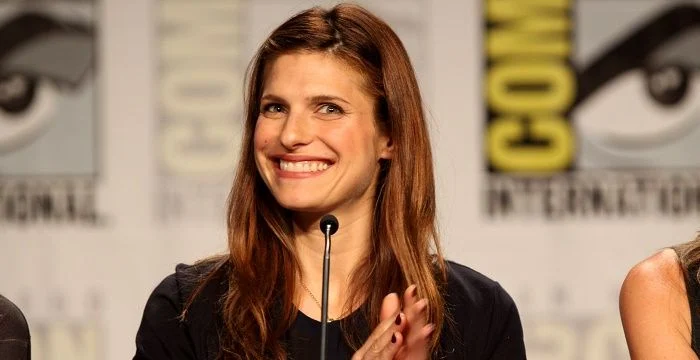Lake Bell, an accomplished actress, director, and screenwriter, was born on March 24, 1979 in New York City. She attended Skidmore College in Saratoga Springs, New York, before transferring to Rose Bruford College in London, England, where she studied acting. Her career in the entertainment industry began with roles in various television shows and films, which laid the groundwork for her future success.
She catapulted to fame with her role in «Boston Legal,» which earned her widespread recognition. However, Bell is not just an actress; she is also a talented director and screenwriter. Her directorial debut, «In a World…», which she also wrote and starred in, received critical acclaim and won the Waldo Salt Screenwriting Award at the Sundance Film Festival.
Outside of her professional life, Bell is married to Scott Campbell, a tattoo artist, and they have two children. Despite her considerable achievements, Bell remains grounded and committed to her craft, continuing to inspire with her multifaceted talent in the film industry.
Noteworthy Television and Film Roles
Noteworthy television and film roles often transcend the confines of our screens, creating a profound impact on viewers while shaping popular culture. These roles can be iconic and memorable, often defining the careers of the actors who portray them. For instance, think about Bryan Cranston’s transformative portrayal of Walter White in «Breaking Bad», a high school chemistry professor turned methamphetamine manufacturing drug dealer.
His nuanced performance perfectly captured the complexity of the character’s journey, earning him critical acclaim. In film, consider the enigmatic and captivating role of Hannibal Lecter in «Silence of the Lambs», masterfully played by Anthony Hopkins. His chilling portrayal of the cannibalistic psychiatrist has become a benchmark for subsequent roles in the thriller genre.
Moreover, some roles are significant due to their representation of diverse identities and experiences. For instance, Laverne Cox’s role as Sophia Burset in «Orange Is The New Black» was a milestone for transgender representation on television. Similarly, Chadwick Boseman’s role as T’Challa in «Black Panther» was a game-changer for the presence of black characters in superhero films.
Yet, not all noteworthy roles are necessarily heroic or admirable. Characters such as Tony Soprano from «The Sopranos» or Cersei Lannister from «Game of Thrones» are compelling in their flawed humanity and moral ambiguity, making them intriguing figures that linger in viewers’ memories.
The power of television and film lies in its ability to tell stories, and it is through these noteworthy roles that these stories come alive. Whether they challenge societal norms, explore the human condition, or simply entertain, these roles have a lasting impact, making them worthy of recognition and discussion.

Unique Acting Style and Techniques
Unique acting styles and techniques are the individual methods actors employ to bring their characters to life. These methods often distinguish actors from their peers, making them memorable and distinctive in their performances. It’s a fascinating aspect of the entertainment world, as these techniques can vary greatly from actor to actor.
Some performers prefer the naturalistic approach, striving to create a believable character by embodying their emotions and reactions in a way that mirrors real-life scenarios. This style, often associated with method acting, might involve deep research into a character’s background, or even living as the character for a period of time.
On the other hand, some actors lean towards a more stylized, exaggerated technique, such as the physical theatre popularized by the likes of Charlie Chaplin or Buster Keaton. These performers use their bodies in expressive, often comedic ways to tell a story or convey emotion. Another unique style involves improv acting, where actors spontaneously create dialogue and action within a given scenario. This technique requires quick thinking, adaptability, and a keen understanding of character motivations.
Meanwhile, some actors are renowned for a minimalist approach, delivering powerful performances with subtle expressions and restrained emotions. They rely heavily on the power of silence and the unspoken word, allowing audiences to interpret their characters’ emotions and intentions. Lastly, there are actors who are known for their transformative abilities, completely altering their appearance, voice, and mannerisms to become virtually unrecognizable in their roles.
These unique acting styles and techniques not only make performances interesting and varied but also offer actors the opportunity to explore and experiment with their craft. They provide a platform for actors to express their creativity, challenge their abilities, and engage audiences in novel ways. Ultimately, these distinctive methods contribute to the rich tapestry of the performing arts, ensuring that no two performances are ever truly alike.
Awards and Honors
Awards and honors play a significant role in recognizing the outstanding achievements and contributions of individuals in various fields. They serve as a testament to the hard work, dedication, and exceptional skills of the recipients. These accolities can come in diverse forms, such as medals, certificates, trophies, titles, scholarships, or even monetary compensation.
They are given in various domains, including academia, arts, sports, and science, with renowned examples being the Nobel Prize in various scientific disciplines, the Academy Awards in filmmaking, and the Pulitzer Prize in journalism. These esteemed recognitions not only provide validation for the recipients’ efforts but also encourage others to strive for excellence in their respective fields. They often bring with them prestige, respect, and opportunities, thus serving as a significant motivating factor for individuals.
However, it is important to remember that while awards and honors are indeed significant, they are not the sole indicators of success. The value of an individual’s work cannot be solely measured by the number of accolades they receive. Ultimately, the impact and influence of one’s work on society and their chosen field are what truly matter. It is also paramount to uphold integrity and ethical standards while striving for these accolades to maintain the credibility and honor associated with these awards.

Significant Collaborations
Significant collaborations are indispensable in the world of business, science, art, and many other areas. These partnerships have the potential to bring about groundbreaking innovations and revolutionary ideas that can transform industries and societies at large. A classic example of a significant collaboration is Microsoft and IBM’s partnership in the 1980s, which led to the development of the first personal computer.
This collaboration changed the face of the computing world and set the stage for the digital revolution. In the realm of science, the international collaboration of scientists working on the Human Genome Project mapped the entire human genome, marking a milestone in understanding human biology. In the field of arts, collaborations between artists of different disciplines often result in unique and breathtaking works, like the fusion of street art and classical music. In humanitarian efforts, collaborations between non-profit organizations, governments, and private sectors have paved the way for successful initiatives addressing global issues such as poverty, climate change, and disease eradication.
These examples underscore the immense power of significant collaborations in influencing and shaping our world. However, it’s important to note that the success of any collaboration hinges on mutual respect, shared objectives, open communication, and trust. Parties involved must be willing to listen, adjust, compromise, and, most importantly, work towards a common goal.
In conclusion, significant collaborations are more than just joint ventures or alliances. They represent the coming together of different minds, skills, and experiences to create, innovate, and solve problems, pushing the boundaries of what is possible.

Philanthropy and Social Contributions
Philanthropy and social contributions are key elements that sustain and propel the progression of society. They represent the selfless acts of individuals or organizations aimed at improving the conditions of others, particularly those in need. Philanthropy goes beyond the mere act of giving; it symbolizes a commitment to social change, an investment in the future, and a responsibility towards humanity. It is a bridge that connects the fortunate with the less fortunate, fostering a sense of community and mutual support.
Social contributions, on the other hand, can take various forms including volunteering, supporting local businesses, or promoting environmental sustainability. These actions, when collectively performed, build a stronger, healthier, and more resilient society. They instill a sense of belonging and purpose, empowering individuals to participate actively in shaping their communities.
Both philanthropy and social contributions are driven by empathy, compassion, and a deep understanding of societal issues. They have the potential to address disparities in areas such as education, health, and poverty, making a significant impact on people’s lives. However, it’s crucial to remember that these initiatives should not be seen as a substitute for systemic change. They are tools that can help alleviate immediate problems, but the ultimate goal should always be to eliminate the root causes of these issues.
Furthermore, the success of philanthropic and social initiatives is largely dependent on transparency, accountability, and effective management. Donors and contributors need to see the direct impact of their actions, and organizations must ensure that resources are being used efficiently and effectively.
In conclusion, philanthropy and social contributions are crucial components of a thriving society. They are expressions of our shared humanity and collective responsibility, reinforcing the idea that we are all interconnected and that each of us has a role to play in creating a better world.
